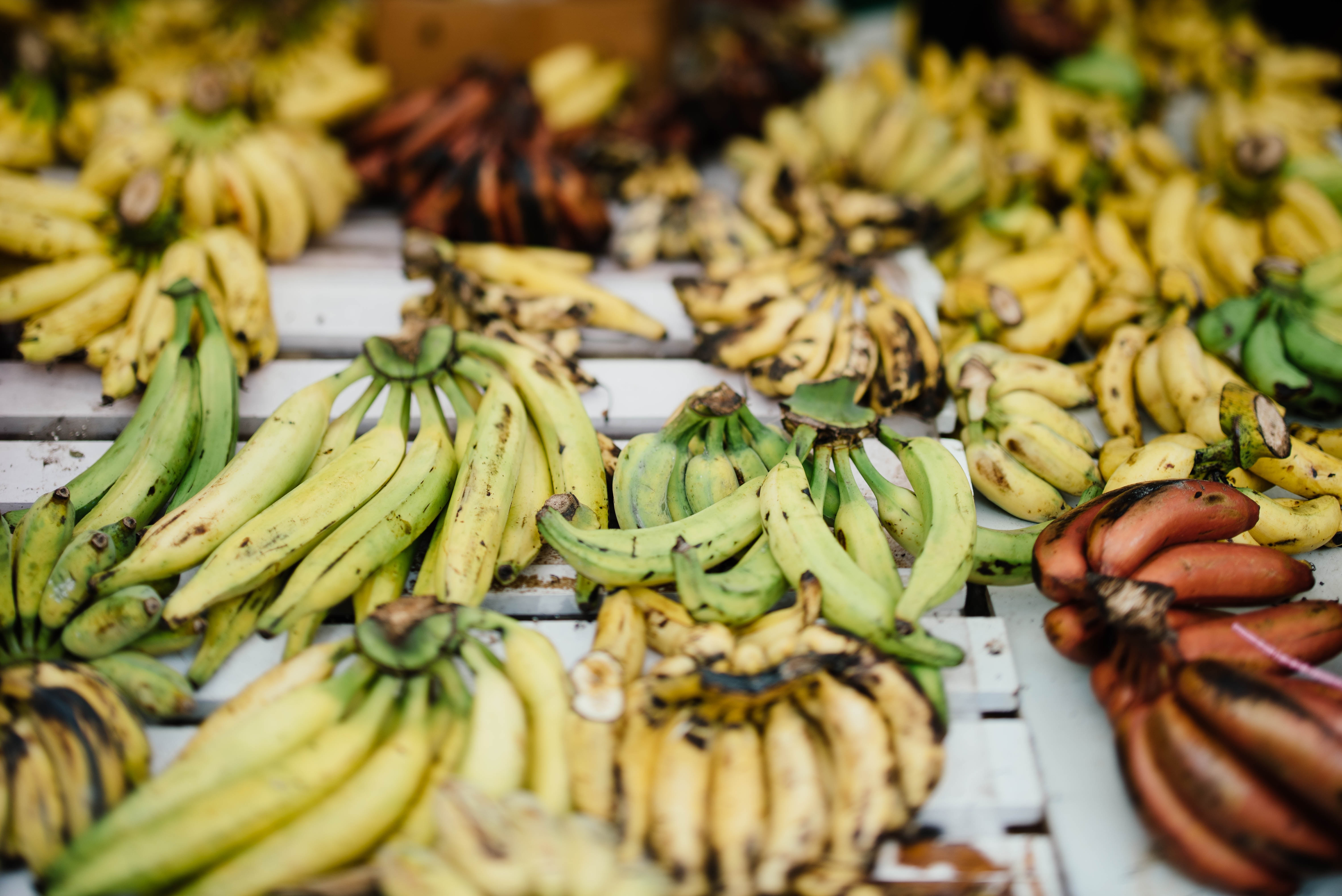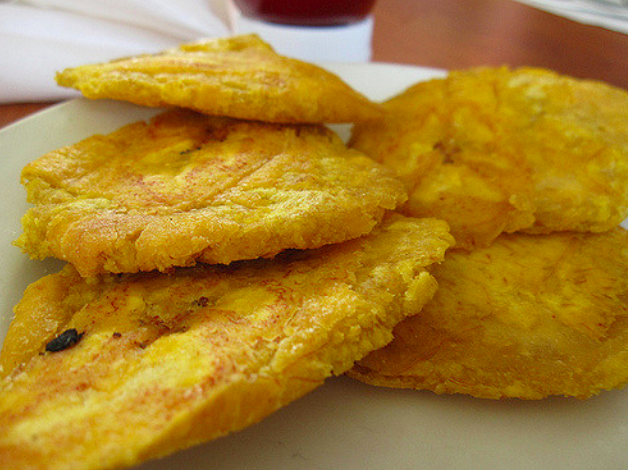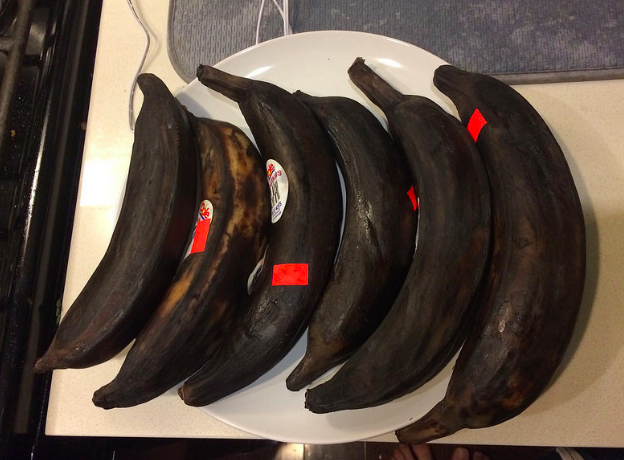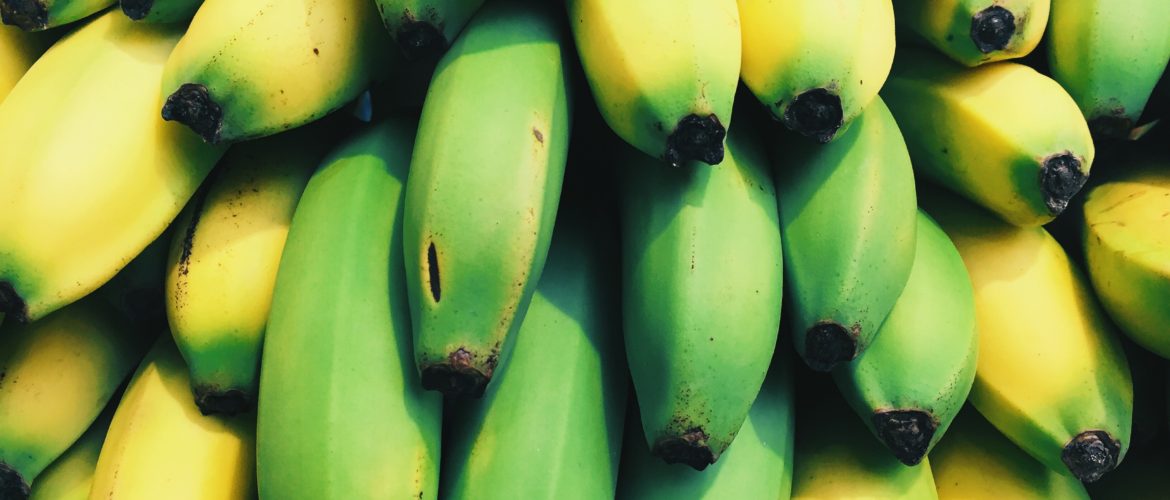Buying plantains in an American grocery store can be a challenge, especially if you aren’t sure how to tell whether a plantain is ripe. For one thing, (depending on where you live) store associates might not be very knowledgeable when you ask for help. They may not even know what a plantain is.

The difference between soft and crispy plantains has more to do with how long they’re allowed to ripen than the variety used. Photo by chuttersnap on Unsplash
I was checking out at my local Food Lion one day when the girl at the register paused. “What’s this?” she asked.
“It’s a plantain,” I responded.
“Oh! I’ve heard of these, but I’ve never eaten one. Are they good?”
“Yeah, they’re delicious,” I said.
“Can you just eat them raw like a banana?”
“I wouldn’t recommend it. They’re very starchy; it would kind of be like eating a raw potato.”
I went on to explain that they’re best fried, boiled, or even baked. I encouraged her to try them someday, and our exchange got me thinking about the many people who are missing out on the magic of plantains simply because they don’t know how to shop for them.
One common misconception is that the plantains used to make Haitian bannann peze, which are thin and crispy, are of a different variety than the ones used to make the soft, sweet plantains more associated with Latin American cuisine. They’re actually exactly the same – the difference is in how long the plantains are allowed to ripen before cooking.

Bannann peze, or “pressed plantains,” are made by flattening plantain slices and frying them in oil. They’re usually sprinkled with salt or other savory spices. Photo by miss_millions
Plantains will continue to ripen after being picked. For that reason, a good rule of thumb is to buy underripe, green plantains. This allows for more versatility in the ways you can prepare them.
If you’d like to make crispy, savory plantain “chips,” or bannann peze, you should fry your plantains while they’re still firm and bright yellow with a few black spots.
If you want a very sweet plantain, leave your green plantains in a dark, cool place until they look like overripe bananas – they’ll go from green to yellow to almost completely black. The riper they get, the sweeter they’ll be. Check on them every day until they reach your desired ripeness. You can fry them at any stage depending on your preferences.

These plantains are perfectly ripened for cutting into thick pieces and frying on medium heat. Their heightened sugar content will allow them to caramelize. Photo by Andrew Ratto
If all the plantains in your grocery store are already yellow mottled with black, it means they’re older. This isn’t always a bad thing, it just means you’ll have to cook them immediately if you want them to be crispy.
And if your regular grocery store doesn’t carry plantains, look around your area for a Hispanic or Caribbean food market. If the labels are written in Spanish, you’ll be looking for “plátanos.”
Now you can walk into the store and shop like a plantain pro! Bon chans, and happy cooking!
Written by Megan Pearson on April 26, 2018

